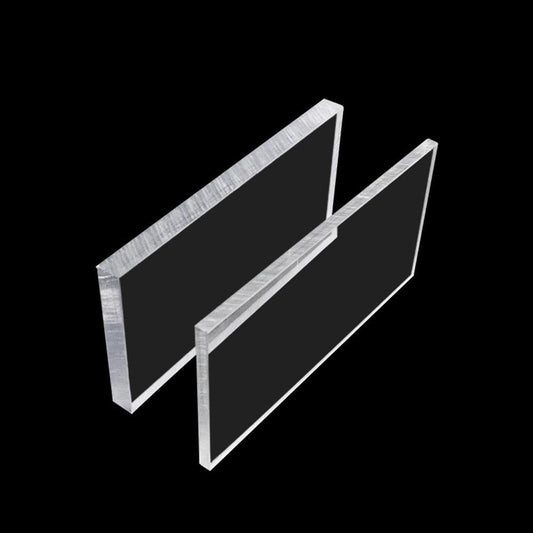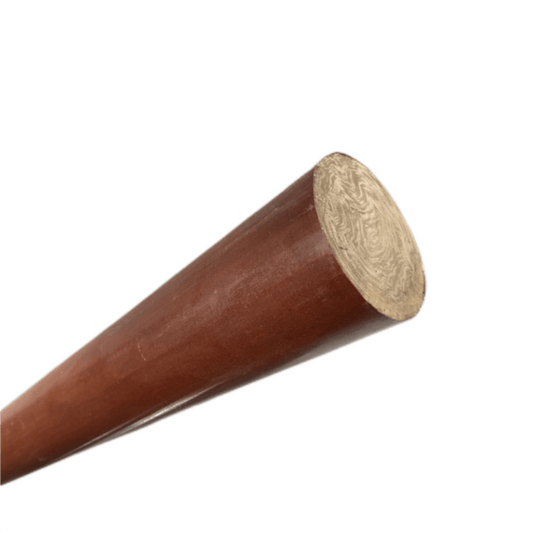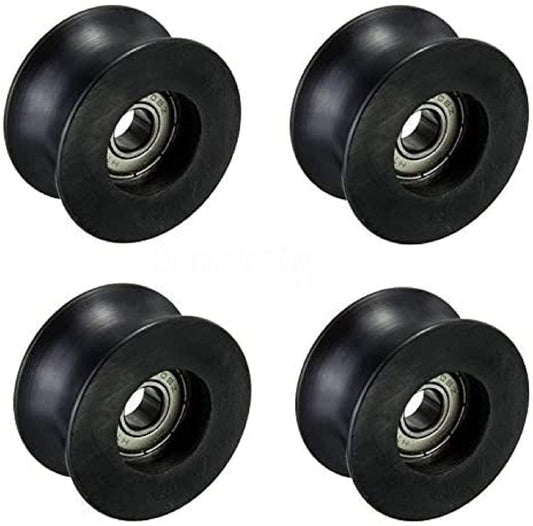In the blog post "Revolutionizing Design: The Impact of CNC Machined PTFE Parts for Product Designers," we embark on an enlightening journey through the world of CNC machined PTFE parts and their transformative role in product design. We begin with "Understanding CNC Machined PTFE Parts: An Overview for Designers," where we lay the foundation by exploring the basics of CNC machining and the unique properties of PTFE materials. This section is crucial for designers to grasp the significance of these components in their work.

Next, we delve into "The Advantages of Using CNC Machined PTFE in Innovative Design Projects," highlighting the unparalleled benefits such as durability, chemical resistance, and versatility that PTFE parts offer. This segment underscores why CNC machined PTFE is a game-changer in the realm of creative design.
Our journey takes a practical turn with "Case Studies: Successful Applications of CNC Machined PTFE in Product Design." Here, real-world examples provide insights into how CNC machined PTFE parts have been effectively implemented, offering inspiration and valuable lessons for aspiring designers.
In "Technical Insights: Working with CNC Machined PTFE in Design Prototyping," we offer a deep dive into the technical nuances of designing and prototyping with PTFE. This section is packed with practical tips and essential considerations, empowering designers to skillfully integrate these parts into their prototypes.
Finally, we explore "Future Trends: The Evolving Role of CNC Machined PTFE in Product Design," where we speculate on the exciting future possibilities. This forward-looking perspective sheds light on how CNC machined PTFE parts could continue to revolutionize the field of design innovation.
Join us as we uncover the remarkable impact of CNC machined PTFE parts in product design, a journey that promises to be as informative as it is inspiring for every product designer out there.
Understanding CNC Machined PTFE Parts: An Overview for Designers
In the realm of modern product design, the integration of advanced materials and manufacturing techniques is pivotal. Among these, CNC machined PTFE parts stand out for their unique properties and applications. This section aims to demystify the basics of CNC machining and PTFE materials, highlighting their relevance and benefits in the field of product design.
What is CNC Machining?
CNC machining is a manufacturing process known for its precision and versatility. It involves the use of computer-controlled machines to shape and modify materials. In the context of PTFE parts, CNC machining allows for high precision in creating complex shapes and sizes, which is crucial for intricate design requirements. The process's accuracy ensures that each part meets stringent specifications, making it ideal for high-quality product design.

The Unique Properties of PTFE
Polytetrafluoroethylene (PTFE), commonly known by the brand name Teflon, is renowned for its remarkable properties. It boasts high resistance to heat, chemicals, and electricity, making it an excellent choice for various applications. In product design, the use of CNC machined PTFE parts can significantly enhance the durability and functionality of the final product. Its non-stick nature and low friction coefficient also open up a plethora of design possibilities, particularly in applications requiring smooth movement or resistance to substances.
Benefits of CNC Machined PTFE in Product Design
The integration of CNC machined PTFE parts in product design offers numerous benefits. Firstly, the precision of CNC machining ensures that PTFE parts fit perfectly into the intended design, reducing the need for adjustments and modifications. This precision is crucial in industries where component fit and function are critical. Additionally, the inherent properties of PTFE, such as its thermal stability and chemical inertness, make it an ideal material for products exposed to harsh environments. This versatility expands the scope of design, allowing designers to explore applications that were previously challenging or impossible.
CNC Machined PTFE: A Designer's Ally
For product designers, CNC machined PTFE parts are more than just components; they are tools that unlock new design potentials. Whether it's creating a part that can withstand extreme temperatures or designing a component that needs to operate smoothly under stress, PTFE's versatility makes it an invaluable material in the designer's toolkit. The ability to custom machine these parts to exact specifications further enhances their applicability in innovative product design.
In conclusion, understanding the synergy between CNC machining and PTFE materials is crucial for any product designer looking to push the boundaries of innovation and functionality. The combination of precision manufacturing and the unique properties of PTFE opens up a world of possibilities, making these components a cornerstone in the evolution of contemporary product design.

The Advantages of Using CNC Machined PTFE in Innovative Design Projects
The utilization of CNC machined PTFE parts in product design is not just a trend but a strategic choice that offers a multitude of advantages. This section explores the specific benefits of incorporating CNC machined PTFE in design projects, focusing on aspects like durability, chemical resistance, and versatility.
Unmatched Durability
One of the most significant advantages of using CNC machined PTFE parts is their exceptional durability. PTFE, being a robust material, can withstand extreme conditions without degrading. This durability is crucial in designs where longevity and reliability are paramount. For instance, in aerospace or automotive industries, the use of PTFE parts ensures that components can endure high stress and variable temperatures, thereby enhancing the overall lifespan of the product.
Superior Chemical Resistance
Another key benefit of PTFE is its remarkable chemical resistance. This property makes CNC machined PTFE parts ideal for use in environments where exposure to corrosive substances is a concern. In the chemical processing industry, for example, PTFE's resistance to a wide range of chemicals ensures that components remain intact and functional, even when in contact with aggressive substances. This chemical inertness not only extends the life of the parts but also guarantees safety in sensitive applications.
Versatility in Applications
The versatility of CNC machined PTFE is a boon for product designers. Its ability to be shaped into complex geometries through CNC machining opens up a world of design possibilities. Whether it's creating custom seals, bearings, or intricate components, PTFE's machinability allows designers to tailor parts to specific needs. This versatility is particularly beneficial in custom or specialized projects where standard components may not suffice.
Enhancing Design Aesthetics and Functionality
Beyond its physical properties, CNC machined PTFE also contributes to the aesthetic and functional aspects of design. Its smooth surface finish can be crucial in designs where a sleek, professional look is desired. Functionally, the low friction coefficient of PTFE minimizes wear and tear in moving parts, ensuring smoother operation and reduced maintenance needs.
A Sustainable Choice for Designers
In today's eco-conscious world, the sustainability of CNC machined PTFE is an aspect that cannot be overlooked. Being a long-lasting material, PTFE reduces the need for frequent replacements, thereby minimizing waste. Its inert nature also means that it does not leach harmful substances, making it a more environmentally friendly option in product design.
In conclusion, the integration of CNC machined PTFE parts in design projects offers a plethora of advantages, from enhancing durability and chemical resistance to increasing versatility and sustainability. These benefits make PTFE an invaluable material in the arsenal of innovative product designers, enabling them to create more efficient, reliable, and environmentally friendly products.










